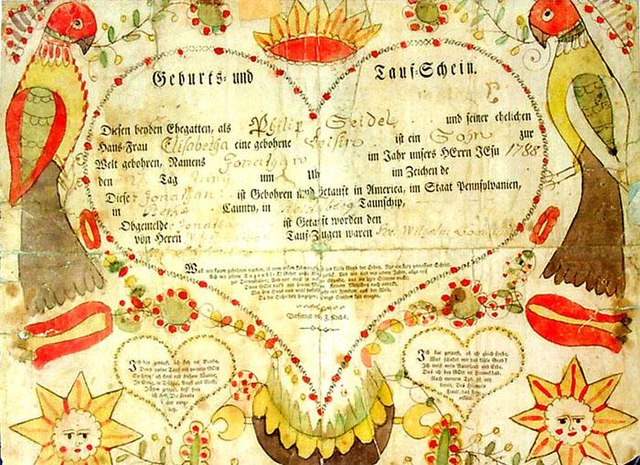Hex signs are a form of Pennsylvania Dutch folk art, related to fraktur, found in the Fancy Dutch tradition in Pennsylvania Dutch Country. Barn paintings, usually in the form of "stars in circles", began to appear on the landscape in the early 19th century and became widespread decades later when commercial ready-mixed paint became readily available. By the 1950s commercialized hex signs, aimed at the tourist market, became popular and these often include stars, compass roses, stylized birds known as distelfinks, hearts, tulips, or a tree of life. Two schools of thought exist on the meaning of hex signs. One school ascribes a talismanic nature to the signs; the other sees them as purely decorative. Both schools recognize that there are sometimes superstitions associated with certain hex sign themes and neither ascribes strong magical power to them. The Amish do not use hex signs.
12-pointed compass rose on a hex sign
Barn with hex signs in Oley Township, Berks County, Pennsylvania in 1941
Barn with compass rose hex signs at the historic Mascot Mills in Lancaster County
A simple hex sign in the form of a compass rose on a suburban shed
Fraktur is a highly artistic and elaborate illuminated folk art created by the Pennsylvania Dutch, named after the Fraktur script associated with it. Most Fraktur were created between 1740 and 1860.
An ornate Taufschein, or baptismal certificate
This 1789 Pennsylvania German chest of drawers show many of the traditional forms that are used in fraktur
Fraktur birth and baptismal certificate (Geburts und Taufschein) of Johanes Bender by Johann Heinrich Otto
A religious poem produced in Bucks County, PA in 1785








